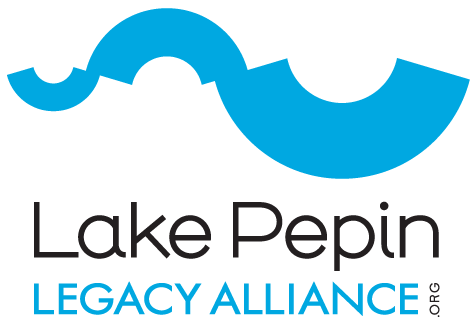1. Sediment reduction has a dismal track record.
The Minnesota Pollution Control Agency (MPCA) determined that the Minnesota River (the main source of sediment) needs to reduce its sediment load by 50% to protect Lake Pepin. The interim goal—a 25% reduction by 2020—is less than two years away and there has been little, if any, progress.
Drawing on decades of scientific research and agency connections, LPLA is mobilizing a strong community response to address this failure. At the same, we understand that sediment reduction is extremely difficult and progress won't be made overnight. Restoration is needed to revitalize Upper Lake Pepin while mitigation work continues upstream.
2. Sediment reduction won't reverse current impacts.
Even if sediment reductions magically happened overnight, Upper Lake Pepin would continue to be impacted by the current sediment build-up. Right now, suspended sediment has created turbid or “cloudy” water that limits light penetration and thereby reduces healthy vegetation—the linchpin of the ecological system. Based on scientific thresholds, water quality in Upper Lake Pepin is nearing a tipping point, making it vulnerable to ecological collapse.
Meanwhile, accumulated sediment has prompted a second wave of impacts related to the loss of water depth. Overwintering fish and migrating birds are losing critical habitat, recreational users are losing access to the area, boat groundings are increasing in frequency and severity, and local communities are becoming isolated from the water, which leads to economic hardship for businesses.
These ongoing impacts need to be addressed.
3. Upper Lake Pepin no longer has the luxury to wait for sediment reductions.
Conditions in Upper Lake Pepin are getting worse. Some communities cannot wait for upstream sediment reductions.
Check-out for LPLA Member Profiles to learn local stories of sediment impacting local recreation and economies.
4. Restoration will soon become cost-prohibitive.
To pursue a restoration project, the federal government needs to have confidence that the financial investment will result in meaningful habitat improvements. Both pieces of this equation—costs and benefits— are in jeopardy if we don't capitalize on the current opportunity.
Cost: Current cost estimates may seem like a large investment, but the Army Corps of Engineers (ACOE) has funding dedicated to habitat improvement on the Mississippi River, which will be used elsewhere if not on Lake Pepin. In fact, the ACOE has been doing these type of restoration projects elsewhere on the Mississippi River for decades. You might ask, why haven't they considered restoration in Lake Pepin until now?
The answer: The federal government doesn't own the land around the lake. Local stakeholders would need to be organized and a local cost-share invested into the project.
Fortunately, LPLA laid the groundwork. We organized local stakeholders and spearheaded restoration using Section 204 Beneficial Use of Dredge Material to dramatically reduce the price tag. Since the project will be providing a placement for dredge material, the cost of that material and transportation is not included in the local cost-share. So yes, a $3.5 M local cost-share is a large investment, but it's less than it would be without LPLA leadership. Plus, Lake Pepin deserves the same ecological investment as the rest of the Mississippi River.
Benefits: Restoration will improve the vitality of Upper Lake Pepin and have far-reaching benefits. Improved fishing, hunting, wildlife viewing, and boat safety are just a few examples. As conditions worsen, however, these benefits become more difficult—and costly—to achieve. Failure to capitalize on restoration now means on-going hardship for the communities already affected.
5. All Lake Pepin communities are worth protecting.
Not all Lake Pepin communities are equally impacted by current sedimentation. Right now, Upper Lake Pepin is carrying the sedimentation burden, but no community is immune. We need to stand by each now because we will need each other to fight upstream sediment reduction.
Bay City. Maiden Rock. Stockholm. Pepin. Wabasha. Lake City. Frontenac. Red Wing. Visitors from Minnesota, Wisconsin, Iowa, and all across the country. We are a United Lake Pepin. We are Lake Pepin Strong. And right now, some of us truly need restoration. To LPLA, that's enough of a reason to do it.




